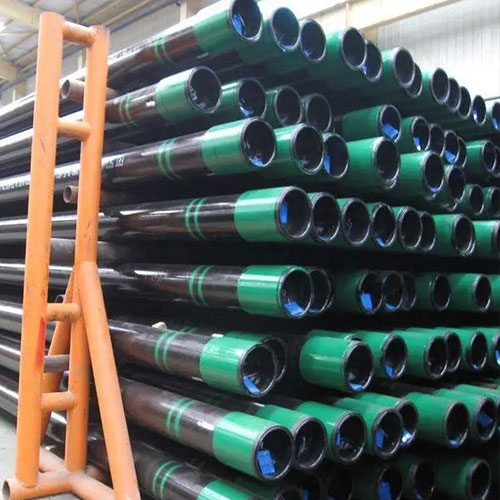
Oil pipe is mainly used for drilling oil and gas wells and transporting oil and gas. It includes oil drill pipe, oil casing and pumping pipe. Oil drill pipe is mainly used to connect drill collar and drill bit and transmit drilling power. Oil casing is mainly used to support the well wall during drilling and after completion to ensure the normal operation of the drilling process and the entire oil well after completion. Pumping pipe mainly transports oil and gas at the bottom of the oil well to the ground.
According to the strength of the steel itself, casing can be divided into different steel grades, namely J55, K55, N80, L80, C90, T95, P110, Q125, V150, etc. Different well conditions and well depths require different steel grades. In corrosive environments, the casing itself is also required to have corrosion resistance. In places with complex geological conditions, the casing is also required to have anti-collapse performance.
Oil casing is a large-diameter pipe that serves to fix the wall or borehole of oil and gas wells. The casing is inserted into the wellbore and fixed with cement to help the wellbore separate the rock formation and prevent the wellbore from collapsing, while ensuring the circulation of drilling mud for drilling and mining. The processing forms of the casing end: short round thread, long round thread, trapezoidal thread, special buckle, etc.
(1) The main importing countries of oil casing are: Germany, Japan, Romania, Czech Republic, Italy, Britain, Austria, Switzerland, the United States, Argentina and Singapore also import. The import standards are mostly based on the American Petroleum Institute standards API5A, 5AX, 5AC. The steel grades are H-40, J-55, N-80, P-110, C-75, C-95, etc. The main specifications are 139.77.72R-2, 177.89.19R-2, 244.58.94R-2, 244.510.03R-2, 244.511.05R-2, etc.
(2) API specifies three lengths: R-1 is 4.88 to 7.62 m, R-2 is 7.62 to 10.36 m, and R-3 is 10.36 m or longer.
(3) Some imported goods are marked with LTC, which means long thread casing.


